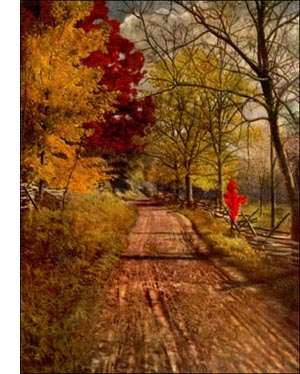Hemlocks
 Genus TSUGA, Carr.
Genus TSUGA, Carr.Tall, graceful trees of pyramidal form, with flexible tip shoots and pendulous, much-divided horizontal limbs. Leaves evergreen, petioled, flat and 2-ranked (except one). Flowers monoecious, solitary, in early spring. Fruit annual cones, small and oval (except one), with thin, entire scales. Wood soft, pale, cross-grained, stiff.
Hemlocks are distinctly graceful and symmetrical trees. Japan has two native species, the Himalayas one, our Eastern States one, the Western States three-seven in all-and Tsuga is the Japanese name for hemlock. The prostrate, shrubby "ground hemlock," familiar to many of us who have eaten its aromatic scarlet berry, is not a hemlock but a yew. The hemlock that Socrates drank was the deadly infusion of an herb, Conium maculatum, related to our wild carrot.
The best character by which to recognise the hemlocks is the tiny petiole of the leaf. No other cone bearer has leaf stalks. Of our native species, all have white lines on the under side of each leaf : the mountain hemlock has them above and below. The first three species have leaves 2-ranked and flat and cones under an inch in length; the fourth has leaves 3-angled, whorled on the twigs, and cones 2 to 3 inches long. Cones are pendant, and thin scaled in all the species, and are borne annually.
Hemlocks are important ornamental trees. They come readily from seed, if shaded, and transplant safely, owing to their dense fibrous root system. They submit to severe pruning of roots or tops. They are not particular in regard to soil, if only it be moist. The two Japanese species are propagated from cuttings, or are grafted on our Eastern hemlock. All hemlocks have bark rich in tannin. The west American species are all large trees, except at high altitudes.
Carolina Hemlock Tree
Hemlock Tree
Mountain Hemlock Tree
Western Hemlock Tree